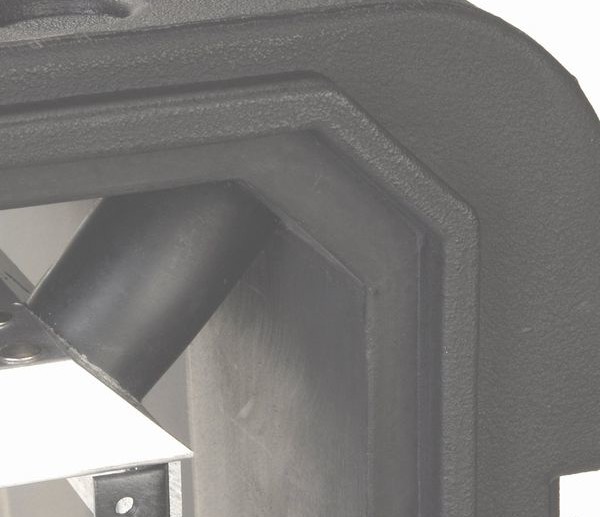
Newton’s Laws of Motion can be problematic for electronics. Why? The first Law of Motion tells us a body will continue in motion unless acted upon by an external force. In the second law, acceleration is the rate at which an object changes its velocity. It’s dependent upon mass and force. So, drop a box from the back of a truck and it accelerates earthwards until it hits unyielding ground. The contents want to keep moving. Instead, they experience severe, possibly destructive, deceleration.
Shock impacts like these (characterized as high amplitude, short duration impulses) can unseat plug-in I/O cards and connectors, crack screens, and destroy hard drives. The consequences can be enormous: Delays while repairs are made and missed deadlines, even the postponement or cancellation of a trip or expedition.
Investing in a quality transit case can prevent this type of damage. A transit case is more than a box or container. Instead, it is an enclosure engineered to manage shock impacts. The energy that would otherwise be transferred to the payload is absorbed and dissipated.
The primary absorption mechanism is through elastomeric mounts between the case and the inner chassis or frame carrying the payload. Matched to the mass of the payload, these mounts compress and expand as necessary to absorb kinetic energy. This allows the contents to come to rest safely without impacting the housing.
The same applies when a case at rest receives a sudden jolt. The case starts moving, but the mounts compress in the direction of motion. This reduces the acceleration experienced by the chassis and payload.
One important design characteristic, and reason foam packing is never sufficient, is the amount of sway space between case and payload. Increased sway space allows for gentler acceleration but reduces the payload volume or increases the case size. It takes expert understanding of the properties of the elastomeric mounts to arrive at the optimal solution.
Payloads more than 350 pounds exceed the ability of elastomeric mounts to absorb energy and motion. Instead, rope wire isolators are used to locate the chassis within the case. These stretch and compress during a shock impact. They reduce the acceleration experienced by the payload and prevent the payload from hitting the case.
It’s not always possible to anticipate the kind of treatment electronics might receive in transit. For instance, sudden shocks can render expensive equipment useless. You can’t argue with the laws of physics. But, you can use a well-engineered case to minimize shock impact on your equipment.
See our entire selection of shock isolated 19” rack mount cases.